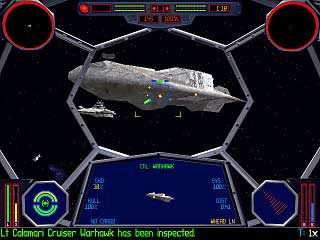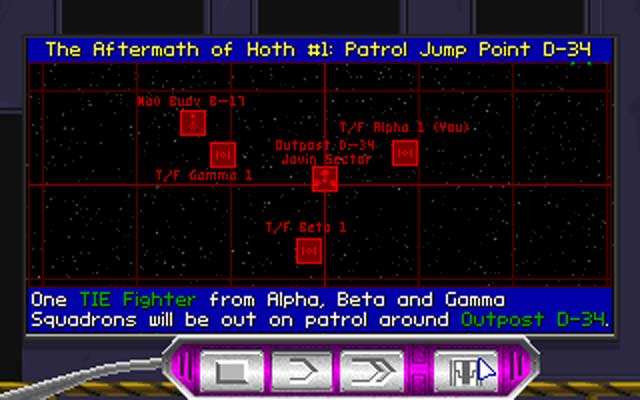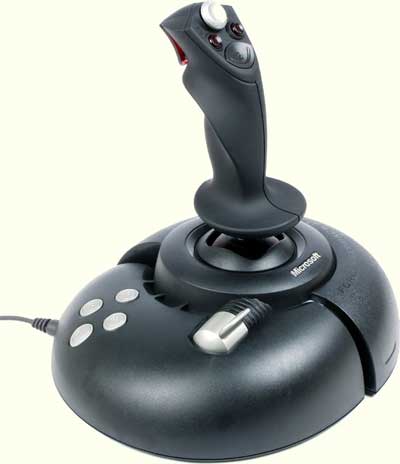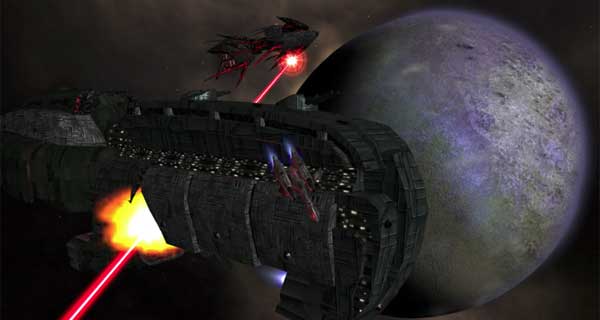Today, earthlings, I give you Brandon Perdue: Carnegie-Mellon grad student in Entertainment Technology, nice person, and proto-celebrity. Why proto? Well, Brandon is still learning his craft. He is not a celebrity yet. But I have faith he’ll become one! Probably very soon! Maybe as early as next week!
I met Brandon when I was down in Pittsburgh speaking at CMU on behalf of another Celebrity Guest Editor, Drew Davidson. It was a cool day for me: CMU’s Entertainment Technology Center is awesome; I got to meet students, which I love, and none of them said (out loud) that they wished they hadn’t come to my little workshop. One did leave in the middle. ANYWAY
Brandon was there, and at the end I gave my pitch for Tap, which I always do, and he said he might be interested in contributing. Thereafter we exchanged some emails discussing a paper he was working on (he never said – out loud – that my comments were useless), and once that was done he asked if the offer was still open. And look!
What we have here is an eloquent reflection on a gone-away genre, one that’s dear to many hearts and sorely missed. I think you’ll agree that he has a gift for capturing why we loved them. Take it away, Brandon!
— S
The Starfighter’s Lament
By Brandon Perdue
Most gamers of my generation can track their genesis back to the golden age of the NES, to Super Mario Bros. 3 or Kirby’s Dreamland or something. I’ve played those, sure. But they didn’t capture my imagination. That was X-Wing.
When I was a kid in the early ’90s, I’d maybe seen the Star Wars trilogy once. I was kind of a latecomer to that. I didn’t have a bunch of models of World War II fighter planes hanging from my bedroom ceiling or know what the Battle of Britain was or what the Red Baron was famous for. (I seem to recall liking boats, actually; I was a weird kid). But when I saw my uncle playing X-Wing on his DOS machine, I was mystified. The idea of piloting a starfighter around in these intense dogfights just captivated me immediately. I wanted to know what all the bits of the HUD were, and how to manipulate them, and which of the available craft was my favorite to pilot (it was the Y-Wing at the time, so I was clearly very ill).
 A few years later, the first game I purchased myself was the TIE Fighter Collector’s Edition CD-ROM for my family’s relatively new Macintosh PowerPC, and a joystick too. You can’t play without a joystick, I had to explain to my Dad. Well, you could, using the mouse, but that’s only for squares. I played the hell out of that game. It had a lot of content, and I just loved it. And yes, this is a game that drops you in the hapless pilot seat of a TIE Fighter, which means it sounds cool to throttle up but might explode if you sneeze the wrong way. This in a medium that, then and now, tends to plant the player in the most high-tech vehicles or give him the biggest guns, not the lowest bidder cannon fodder solution.
A few years later, the first game I purchased myself was the TIE Fighter Collector’s Edition CD-ROM for my family’s relatively new Macintosh PowerPC, and a joystick too. You can’t play without a joystick, I had to explain to my Dad. Well, you could, using the mouse, but that’s only for squares. I played the hell out of that game. It had a lot of content, and I just loved it. And yes, this is a game that drops you in the hapless pilot seat of a TIE Fighter, which means it sounds cool to throttle up but might explode if you sneeze the wrong way. This in a medium that, then and now, tends to plant the player in the most high-tech vehicles or give him the biggest guns, not the lowest bidder cannon fodder solution.
It was love. With each mission I felt part of this larger story, not just my story but that of the Star Wars universe, since I was just a soldier, really. The novelty of having objectives other than beating a level to proceed because beating the game was a good thing never wore off on me. Still hasn’t, though games are generally better at contextualizing now. This was my element.
Ace Plumber, Ace Pilot
Looking back, I think a major reason – maybe the major reason – that starfighter sims grabbed me so early and never let go was that they were games that I felt like I could actually get good at. Meaningfully good. At the time my alternatives were things like Mario or Sonic or Mega Man; I didn’t realize the inherent masterwork in these games until much later. They were fun, but vapid, I thought; when my friends boasted about how good they were at Mario, that usually meant they knew where the power-ups were and the patterns of how the enemies moved. I appreciated this learning curve, but it didn’t exactly require a dynamic skill. Out-flying A-Wings, now that takes skill. And often these games required juggling those skills with adapting to the changing battlefield: missions almost never go as planned, and frankly I’m retroactively impressed with the quality of the encounter design in some of these games.

Learning the nuances of how best to allocate my fighter’s energy reserves (usually between weapons, engines, and shields) and which hot keys I really needed to know and how to evade enemies who were more maneuverable than I captured my attention. There’s plenty of trial and error memorization in starfighter sims, like any game: knowing that a squadron of enemy bombers is going to spawn as soon as you complete this objective can be critical to your success. But as a player you also had to be able to take advantage of that foreknowledge. To me that was harder (and thus more compelling) then knowing which block to punch, and frankly I couldn’t figure out why it wasn’t to everyone else who played games.
Of course, starfighter sims – sims in general – have been dead as a genre for better than a decade now. People tend to point at the relative complexity of these games, which I found so engrossing, as the culprit in the genre’s eventual demise. I’ve certainly played sims that were way too much for me: things that try to simulate real modern aircraft, and space sims that use realistic physics, and all those things just go a step too far (or several steps, in some cases). But the lion’s share only had a handful of important bits, and they really weren’t much more complicated than any other action game. Just complicated in a different way.
I have a theory that simulations are to the average video gamer what computers are to normal people: horrifying entities of nightmare and darkness that exist only thanks to the most arcane arts and the tears of chocolate Labrador puppies. My parents, computer users for about fifteen years now, still do not know the difference between a desktop wallpaper and a screen saver; to my mind, this isn’t entirely dissimilar to my RTS wiz friend being a bit stymied by TIE Fighter’s radar. Is it?
 Joystick Zen
Joystick Zen
Until the early oughties sci-fi simulations made up the core of my video gaming. I played plenty of other things, but they always came first. When a new one appeared, or I discovered an old one that I missed, it got priority. X-Wing vs. TIE Fighter. Tachyon: The Fringe. X-Wing Alliance. Starlancer. MechWarrior 3. MechWarrior 4. Descent: Freespace. The Wing Commander series (which was slightly before my time and I came despairingly late to). The list goes on.
I went through several joysticks during this time, partially because I went through several computers, but also because I found that there was always a bigger fish, always a nicer piece of hardware. I’ve never been a die-hard fan of peripherals, but wow do I love a good joystick. The right piece of hardware is critical to these games: you need the one that works for you and gives you all the options and axes you need. (On the rare occasion I encounter an operational joystick hooked to a desktop computer these days, the first thing I do, rather unconsciously, is check to see if it has rudder). The right joystick can bring a sim to life like nothing else really can. Screw the Wii; I’ve never been as engrossed in a Wii game as when I’m frantically yanking my joystick back and forth, often leaning bodily while I do it, trying to evade that blasted Shivan that I just can’t shake while the force feedback fights against me. I’d say more, but it would only sound more like a poor sexual metaphor than this already does.
Maybe that’s what frightened people away from the sim. Peripherals are an extra expenditure (though you could usually get a pretty solid joystick for $20) and take up some space, and, truth be told, they are a daunting interface – especially the nice ones. This was even more true back when console controllers had maybe half a dozen total buttons plus a d-pad. And they take some getting used to. But take the time to fine-tune your joystick settings, the button mappings, the calibration, and it just becomes an extension of yourself.
The First (and Last) Starfighter
Sci-fi simulations are a remarkably aged genre, and are responsible for loads of things we take for granted now. Elite, one of the most pivotal computer games in the early history of computer games, was a sci-fi sim, and an open world one at that. Even its much later spiritual successor Wing Commander: Privateer predated the first Grand Theft Auto by four or five years. (Heck, the first Wing Commander had branching narrative. In, you know, 1990.) Elite also used those nifty 3D-esque vector graphics, and sims continued to be 3D when most other games were not. Heck, these games were “first-person shooters” long before Doom.

Though there have been some sci-fi sims since the turn of the century, I tend to think of the end of the genre as being one and the same with its peak: 1999’s Freespace 2. I’ll be the first to admit Freespace 2 didn’t do anything new. Sims, honestly, have never been great at that, which might have decreased their longevity. But it did everything that a sci-fi sim had ever done well, and it did all of that exceptionally. Freespace is the tale of humanity’s desperate struggle against a mysterious extragalactic race known as the Shivans. Their carriers are bigger than yours. Their fighters are faster. When you first encounter them, they’re invisible to radar and immune to your weapons. And you are dropped into these dire straits in relative anonymity, just another pilot in the fleet. You feel the desperation because you aren’t anybody’s silver bullet: you’re just a dude in the same kind of starfighter as all the other dudes.
The war unfolds between in-mission events and between-mission newsfeeds as the Galactic Terran-Vasudan Alliance struggles to update its tech enough to stave off the Shivans. New ships and weapons are regularly added to the options available at the beginning of missions, with ships to suit your play style and loadout requirements, from the nimble and powerful Ulysses to the flies-like-a-large-boulder Hercules, which some people I know prefer anyway because they’re daft. But always the Shivans have a trump card. I’ve played plenty of highly narrative, even “cinematic,” games, but I could probably name only a handful that rivaled the relatively simple narrative experience of Freespace in quality execution.
The problem is that this genre ended on a cliffhanger. Freespace 2 left the largest Shivan threat yet looming in the future, but Freespace 3 will almost certainly never materialize. Boy, do I wish it would.
The Starfighters’ Lament
I don’t dust off my Sidewinder joystick (which, I maintain, is the best thing ever to come out of Microsoft) as often as I’d like anymore. When I do it’s almost certainly to replay an old game – probably Freespace. I miss the call for both twitch reactions and strategy simultaneously (not to mention a little luck). Nothing compares.
Some publishers have tried to replace the sim with things like Rogue Squadron and MechAssault, but they’re stripped down to bare bones. The first Rogue Squadron was still good fun thanks to solid mission design, but the rest of that series, and most like it, just feel dumb in comparison. And they feel like the developers think I’m dumb. Games have made great strides in usability over the years, and that’s great, but sometimes I think that comes at the cost of being handled with kid gloves. I miss being trusted having to constantly multitask and achieve my goals without being given a special edge over my opponents – regenerating health or power-ups or bigger guns. It’s like I had my driver’s license for years and then one day was told that from now on I’d have to have one of my parents in the car again, like when I was still learning.
But I’ll be ready for the next time we’re called to defend the Earth from alien invaders in spaceborne dogfights, or fly for the Empire, or lose a war to space Communists. And I do believe that that day will come again. There’s some good titles out there, on Steam and via other vendors; I’d suggest you get ready too. Best Buy even still sells a joystick or two, last time I checked. Just let me know if it has rudder.
If you monsters behave yourselves, Brandon might stick around to chat and respond to your comments. You can visit his site at brandonperdue.com.


Great article, Brandon – I loved the hell out of the X-Wing and Tie Fighter games as well. They had so much going for them, not only the over-arching storyline, the each mission had a great narrative to it. It was heightened, of course, by people giving you orders throughout the mission, or by mission objectives changing as targets were revealed as decoys or whatever. Just great games. Oh, and getting a tattoo on the forearm from the Emperor, that was a touch of genius.
We do need more sims, I think. I particularly lament the loss of the Mech Warrior-type sims. Shake and bake a good sci-fi sim with an RPG, and I’d melt with joy all over the floor. Er, or not. I live in eternal hope that Bethesday will one day do a space-operatic RPG, something along the lines of the Wing Commander series but open-ended. That would be bliss.
Wow. I hadn’t realized how much I missed these kind of games until I read this article. I still have an old copy of Elite, and the C64 I played it on, in the garage. I always felt like the resource management of Warcraft (the old 2D games, not WoW) was an approximation of the kind of RTS play of a good space shooter. Even when I was playing Freespace I compared the experience to Elite.
Thanks for pushing my nostalgia button. 😉
I do (perhaps foolishly) have high hopes for the new MechWarrior game that’s on the horizon. I’m an outrageous BattleTech fan besides, so it’s kind of a two-pronged hope there.
I never did play Elite (a bit before my time, alas) but I did get to attend an Elite postmortem at GDC this year. It was really awesome to hear the kinds of things that inspired the game, and the technical hurdles they had to overcome to make it all work. As always, limitation is the key to excellence.
Ah, Freespace. It was my perfect space sim with beautiful graphics, a desperate tone, and mysterious and dangerous enemies. I always felt as though we were on the brink of extermination and it made for a great game.
I don’t know why space sims went bye-bye. Perhaps the culprit was market saturation because I remember there were more than I could keep up with. RTSs seem to have gone the same way, for now.
Great read Brandon! Tie-Fighter was one of my earlier DOS games, and something a blew countless hours on. Never did pick up X-Wing, and haven’t really played many space sims since (they really can be a bit too demanding) but I’ll always remember Tie Fighter fondly. Still have the short book that came with it too!
Have you played the X series? They have a lot more of the trade aspect and the silliest enemy name ever imagined in a video game. Frankly the games were just too complex for me, but still beautiful to see and play.
Adventure gaming started me out on the PC but it was space sims like TIE Fighter and Wing Commander which really lit up my imagination. My Logitech joystick probably has a good pound of dust on it right now… *sigh*
Loved your article, Brandon; I hope we hear from you again.
Thanks everyone for the kind words.
Armand, I haven’t played the X series, though I periodically come really close to getting one of them on Steam. The main reason I haven’t is that I’ve always been into the mission-based starfighter sims a lot more than the more open-world ones. I often get bored with open world games in general, truth be told. There’s just other games I’d rather play.
I think the only post-2000 space sim I’ve actually played at all is Freelancer (though I’d have to double check), and while it was okay for a while it wore sort of thin. The mouse controls were neat but not as engaging as a joystick would’ve been.
Late to the party as usual. This really set me down memory lane. Wing Commander was one of my first PC games. Wing Commander 2 soon followed. I kind of lost interest after they went FMV. And X-Wing and Tie Fighter! Those were some great games. I never played Freespace. I guess I had moved on to other things by then.
Thanks for bringing back such great memories!
As always, I’m so very very late, but great piece Brandon. I grew up with joysticks through the Spectrum and Amiga days but for some reason never acquired one for the PC. I was tempted to just so I could properly pilot an apache in the Desert Combat mod for Battlefield: 1942.
Believe it or not the only space sim I’ve ever played is TIE Fighter and I haven’t a clue how me and my brother got hold of it back in the day. I’m not even sure how long we played it for but I do remember loving it. I think I got horribly stuck at some point, and I think it involved trying to destroy a TIE defender. No matter how much mouse dragging I did to get the bastard in sight, it always out maneuvered me.
Since then all I’ve bought space sim-wise is Freespace 2 which I intend to use to play the original Freespace using the Open Project mod. I might even get a joystick 😉
Thanks Brandon!
@Gregg B, joysticks are a must! I’ve seen people play sims with mice but I can’t imagine how they get the kind of responsiveness you need. Killing a TIE Defender with one just seems like an exercise in frustration. They’re hard enough to pin down anyway.